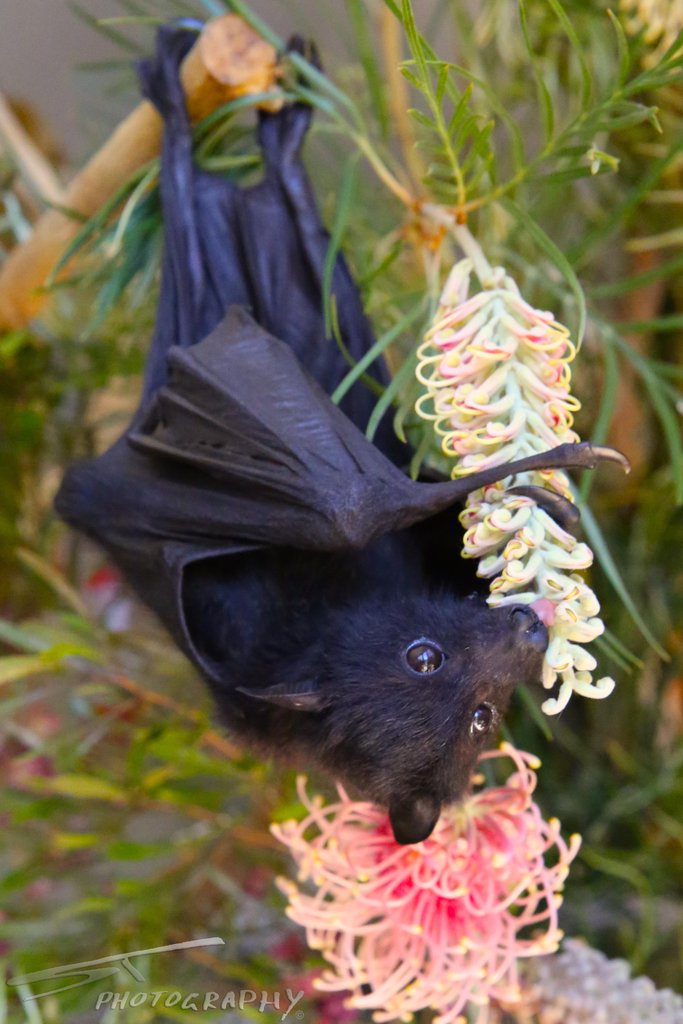By Maryanne Large | Project leader
Seasons matter in bat care. Most baby flying foxes are born in a 3 week period in October/November, and are carried by their mothers for the first 5 weeks or so. If the mother gets injured or dies in this time, the pup may survive- this is how most of the babies come into care. Generally their mothers have been caught in netting or electrocuted on power lines. The last of the pups was released in April.
The bats in care now are mostly victims of netting entanglement. Not all bats survive entanglement, and those that do often have severe injuries requiring extensive treatment and rehabilitation. There's a lot of work in rehabilitating injured flying foxes. But fortunately we have some amazing volunteers. If you check the link, you'll find a little video about one of our bat-obsessed vollies: Sarah "Bat-Girl" Curran.
Until the baby season starts in force, it is relatively quiet at the creche and release facility. The daily fruit chop is only about 8kg, down from 30kg or so in peak times. We've spent some of the quiet time making preparations, including training up volunteers to cope with heat stress events, which sadly are becoming much more common.
You can help too, by only using wildlife friendly netting (mesh size less than 5mm), and always reporting bats on powerlines, so we can see if there is a living pup we can save.
Many many thanks for all your help!
Links:
Project reports on GlobalGiving are posted directly to globalgiving.org by Project Leaders as they are completed, generally every 3-4 months. To protect the integrity of these documents, GlobalGiving does not alter them; therefore you may find some language or formatting issues.
If you donate to this project or have donated to this project, you can receive an email when this project posts a report. You can also subscribe for reports without donating.
Support this important cause by creating a personalized fundraising page.
Start a Fundraiser